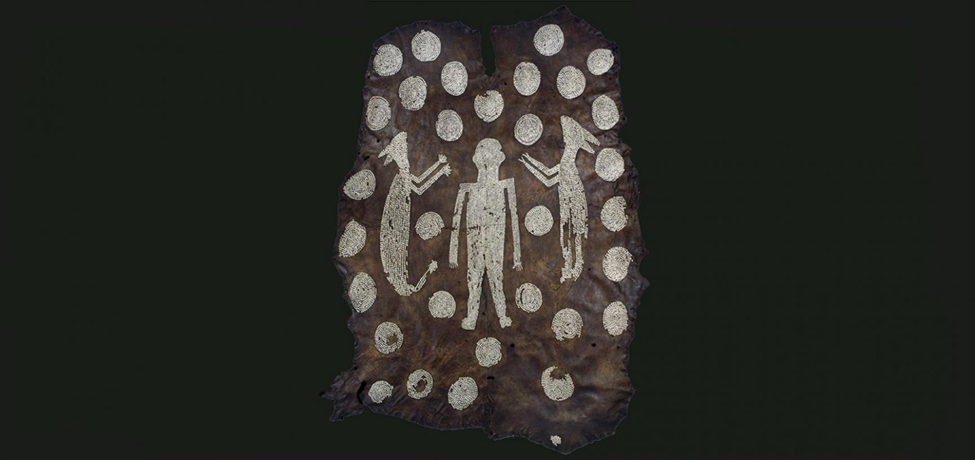In “Virginia Britannia” Moore adds a note that Powhatan presented Captain John Smith with a deer-skin mantle “now in the Ashmolean.” Indeed, the mantle is still in that Oxford museum visited by Moore at least via print. Here is the official cataloging: Powhatan’s Mantle, Southern Chesapeake Bay region, , Virginia, United States of America c. 1600–38. Leather, shell and sinew, 235 x 160 cm, Presented by Elias Ashmole, 1677, from the Tradescant Collection.
The Tradescant family formed their collection in the early 17th century and presented it to Oxford in the 1650s. Today, the mantle is the first image offered on the collection’s website:

The museum’s description is:
“The Mantle consists of four hides of white-tailed deer (Odocoileus virginianus) that have been trimmed and sewn together with sinew. The shell beadwork consists of a central standing human-like figure flanked symmetrically by two opposed four-legged animal figures in profile. One of these figures has claws, short ears and a long tail, and has been interpreted as a wolf. The other has hooves, larger ears and a shorter tail, and may be a white-tailed deer. The three figures are surrounded by thirty-four circles.
“The meaning of the three central figures is unknown, although it is thought that the human figure might either represent a deity, or Powhatan as paramount chief. Researchers believe that the circles represent settlements, as they do on south-eastern Indigenous American maps of that time, and that they probably represent the tribal nations of the Powhatan Confederacy.” (https://ashmolean.web.ox.ac.uk/powhatans-mantle)
It would seem that Moore found a reference to deer-skin mantles in the book she sites later in her notes: Travels and Works of Captain John Smith, President of Virginia and Admiral of New England, 1780-1831. Moore probably read the 1910 printing of this work; a gofer at the Viking Press is said to have “updated” her bibliographic references for its publications (from which this note is drawn).
Leave a comment